Related Research Articles
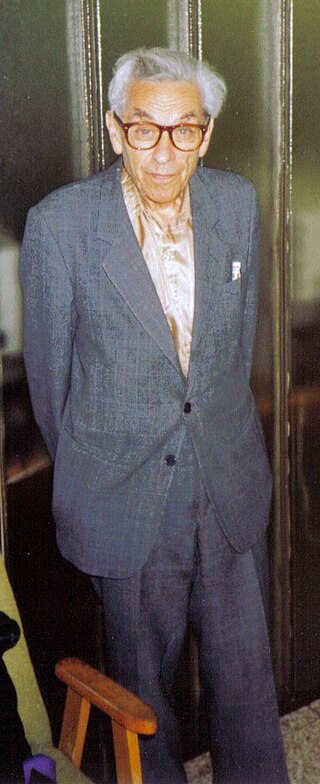
The Erdős number describes the "collaborative distance" between mathematician Paul Erdős and another person, as measured by authorship of mathematical papers. The same principle has been applied in other fields where a particular individual has collaborated with a large and broad number of peers.

Srinivasa Ramanujan was an Indian mathematician. Though he had almost no formal training in pure mathematics, he made substantial contributions to mathematical analysis, number theory, infinite series, and continued fractions, including solutions to mathematical problems then considered unsolvable.
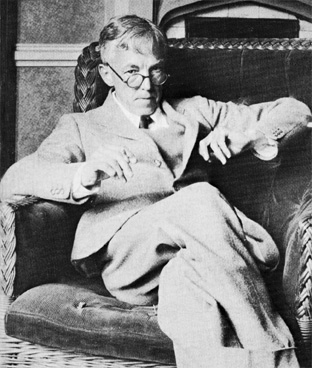
Godfrey Harold Hardy was an English mathematician, known for his achievements in number theory and mathematical analysis. In biology, he is known for the Hardy–Weinberg principle, a basic principle of population genetics.

John Edensor Littlewood was a British mathematician. He worked on topics relating to analysis, number theory, and differential equations and had lengthy collaborations with G. H. Hardy, Srinivasa Ramanujan and Mary Cartwright.

Pál Turán also known as Paul Turán, was a Hungarian mathematician who worked primarily in extremal combinatorics.
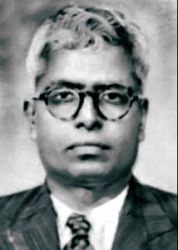
Subbayya Sivasankaranarayana Pillai was an Indian mathematician specialising in number theory. His contribution to Waring's problem was described in 1950 by K. S. Chandrasekharan as "almost certainly his best piece of work and one of the very best achievements in Indian Mathematics since Ramanujan".
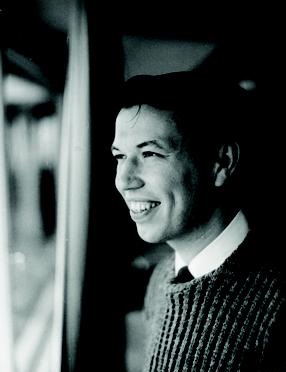
George Eyre Andrews is an American mathematician working in special functions, number theory, analysis and combinatorics.
Bruce Carl Berndt is an American mathematician. Berndt attended college at Albion College, graduating in 1961, where he also ran track. He received his master's and doctoral degrees from the University of Wisconsin–Madison. He lectured for a year at the University of Glasgow and then, in 1967, was appointed an assistant professor at the University of Illinois at Urbana-Champaign, where he has remained since. In 1973–74 he was a visiting scholar at the Institute for Advanced Study in Princeton. He is currently Michio Suzuki Distinguished Research Professor of Mathematics at the University of Illinois.
Robert Alexander Rankin FRSE FRSAMD was a Scottish mathematician who worked in analytic number theory.
Ramanujan's lost notebook is the manuscript in which the Indian mathematician Srinivasa Ramanujan recorded the mathematical discoveries of the last year (1919–1920) of his life. Its whereabouts were unknown to all but a few mathematicians until it was rediscovered by George Andrews in 1976, in a box of effects of G. N. Watson stored at the Wren Library at Trinity College, Cambridge. The "notebook" is not a book, but consists of loose and unordered sheets of paper described as "more than one hundred pages written on 138 sides in Ramanujan's distinctive handwriting. The sheets contained over six hundred mathematical formulas listed consecutively without proofs."

Kannan Soundararajan is an Indian-born American mathematician and a professor of mathematics at Stanford University. Before moving to Stanford in 2006, he was a faculty member at University of Michigan, where he had also pursued his undergraduate studies. His main research interest is in analytic number theory, particularly in the subfields of automorphic L-functions, and multiplicative number theory.
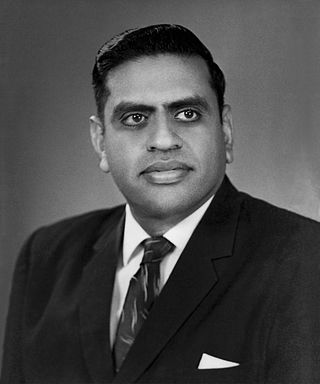
Alladi Ramakrishnan was an Indian physicist and the founder of the Institute of Mathematical Sciences (Matscience) in Chennai. He made contributions to stochastic process, particle physics, algebra of matrices, special theory of relativity and quantum mechanics.
Kanakanahalli Ramachandra was an Indian mathematician working in both analytic number theory and algebraic number theory.
Basil Gordon was a mathematician at UCLA, specializing in number theory and combinatorics. He obtained his Ph.D. at California Institute of Technology under the supervision of Tom Apostol. Ken Ono was one of his students.

K. Ananda Rau was an eminent Indian mathematician and a contemporary of Ramanujan. Though Rau was six years junior to Ramanujan, his mathematical trajectory, unlike Ramanujan's, was very much a conventional one and he had decided to pursue a career in mathematics well before Ramanujan's prowess became known.
Peter D. T. A. Elliott is an American mathematician, working in the field of number theory. He is one of the two mathematicians after whom the Elliott–Halberstam conjecture is named.

James Alexander Maynard is an English mathematician working in analytic number theory and in particular the theory of prime numbers. In 2017, he was appointed Research Professor at Oxford. Maynard is a fellow of St John's College, Oxford. He was awarded the Fields Medal in 2022 and the New Horizons in Mathematics Prize in 2023.
Multiplicative partitions of factorials are expressions of values of the factorial function as products of powers of prime numbers. They have been studied by Paul Erdős and others.

Kevin B. Ford is an American mathematician working in analytic number theory.
Shai Evra is mathematician in Princeton University and Hebrew University of Jerusalem specialising in representation theory. He was awarded the SASTRA Ramanujan Prize in 2020. His research concerns include symmetric spaces of arithmetic groups and their combinatoric, geometric, and topological structure.
References
- 1 2 3 4 5 Curriculum vitae, retrieved 2015-01-11.
- ↑ The Ramanujan Journal, Springer-Verlag, retrieved 2015-01-11.
- ↑ Alladi, K.; Erdős, P. (1977), "On an additive arithmetic function", Pacific Journal of Mathematics, 71 (2): 275–294, CiteSeerX 10.1.1.210.6775 , doi: 10.2140/pjm.1977.71.275 , MR 0447086 .
- ↑ Krishnaswami Alladi and Paul Erdős, VarahaMihira Gopu, YouTube, December 28, 2013, retrieved 2015-01-11. Video of a talk in which Alladi recounts his story about meeting Erdős.
- ↑ Venkatraman, Vijaysree (2019-07-06). "Paul Erdős, a legendary mathematician in Madras". The Hindu. ISSN 0971-751X . Retrieved 2019-07-07.
- ↑ Krishnaswami Alladi at the Mathematics Genealogy Project
- ↑ List of Fellows of the American Mathematical Society, retrieved 2015-01-11.